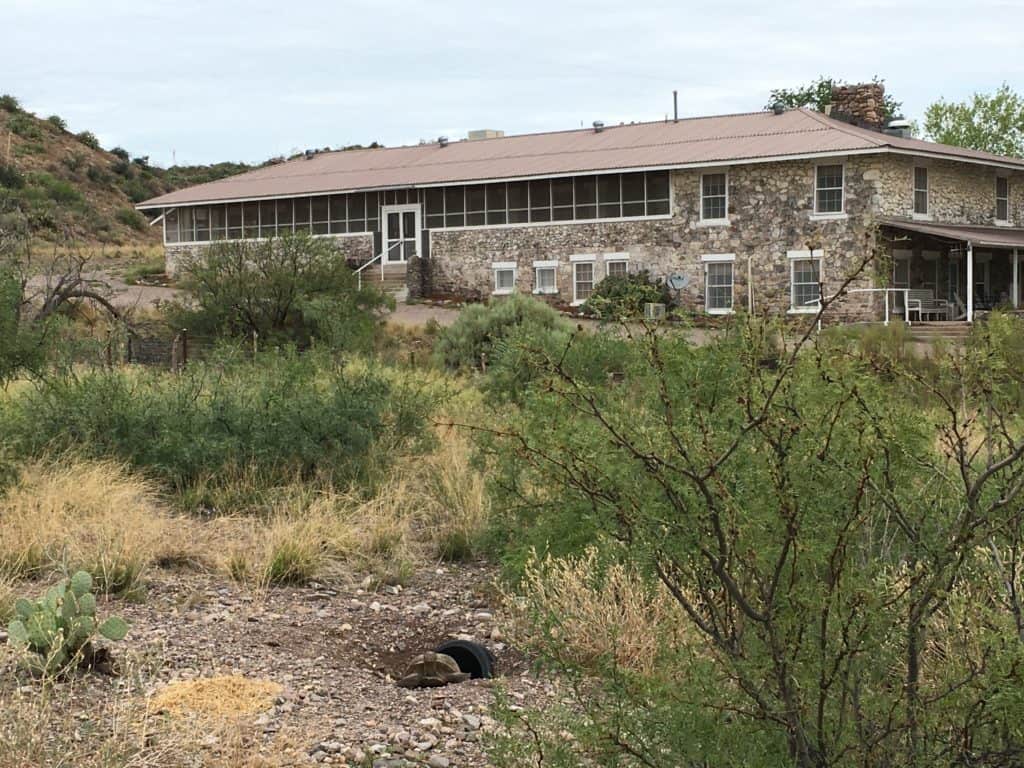
Ladder Tortugarium: A sanctuary for hybrid tortoises
In 2019, volunteers and staff from several Turner entities (Turner Endangered Species Fund (TESF), Ted Turner Reserves (TTR), and the Ladder Ranch) teamed up to build two ~1 acre tortoise holding pens at Ladder Headquarters and in early September 2019, the new “tortugarium” became the forever-home to four large tortoises that now delight ranch staff, guests, and visitors alike.
All four current tortugarium residents are special tortoises: they are unnatural hybrids between two endangered species, gopher tortoises and bolson tortoises. These two species live in very different habitats and their current native ranges do not overlap: the gopher tortoise is native to longleaf pine ecosystems of the southeastern US and the bolson tortoise inhabits the Chihuahuan desert. Being geographically separated by hundreds of miles, these two species would never interbreed in nature. So where did these hybrids come from? They probably all originated from a single misguided back-yard pairing in Las Cruces in the late 1960s (!) that resulted in offspring between a tortoise picked up during a family vacation to Chihuahua (bolson tortoise) and a second tortoise picked up during a separate trip to Florida (gopher tortoise). Both originators being very long-lived species, the surviving offspring appear to be equally long-lived (decades, if not close to a century) – and because they seem to be able to reproduce, will pose a threat to bolson tortoise restoration efforts for many years to come if not removed from circulation. Over the years, several hybrid tortoises in addition to these four have been found as pets in people’s backyards, or as escapees wandering through the desert in NM and AZ. All of these hybrids are possibly descendants of that same 1960s Las Cruces pair.
These unnatural hybrids closely resemble both original species, but because gopher and bolson tortoises are closely related and also resemble each other, the hybrids can be identified for certain only by molecular biological methods (i.e., genotyping).
We named “our” four inaugural hybrids Prius, Niro, Ioniq (see what we did here?), and Smitty (because of where he was found). Prius, Niro, Ioniq, and Smitty will never be part of TESF’s bolson tortoise restoration efforts and will not be allowed to propagate because they are not a natural species. We established the Ladder tortugarium specifically as a sanctuary so hybrid tortoises like these have a place to live out their natural lifespans while they serve as a reminder to everyone to please leave wild animals in the wild.
If you or someone you know has a tortoise that may be a bolson tortoise or a gopher tortoise/bolson tortoise hybrid, we would love to hear from you.
Most people are unaware that all ~350 turtle and tortoise species around the world are in trouble as they are facing significant declines from habitat loss, disease and pollution – and increasingly, poaching and collection for food and the pet trade. Biologically, turtles are especially vulnerable to over-collection because many species take years or even decades to reach reproductive age. Taking even a few individuals from the wild can be the difference between population persistence and population loss.
So, what should you do when you see a turtle in the wild? Consider yourself lucky and admire it from a distance! It is ‘turtle-y’ ok to move a turtle to nearby safety if it is in the road and might be struck by a car (move it just across the road, in the direction it seems to be heading) – but please know that wild turtles do not need our help to find food or shelter. We urge everyone to enjoy wild turtles from a distance and leave them where they were found.
If you own a pet turtle you no longer want to care for, please contact your local animal shelter or turtle group to allow someone else to adopt your pet – and please never release your pet turtle into the wild where it will most likely not survive anyway. If you want to acquire a turtle as a pet, please do not take one from the wild but instead obtain one from a shelter or an adoption program in your area.
